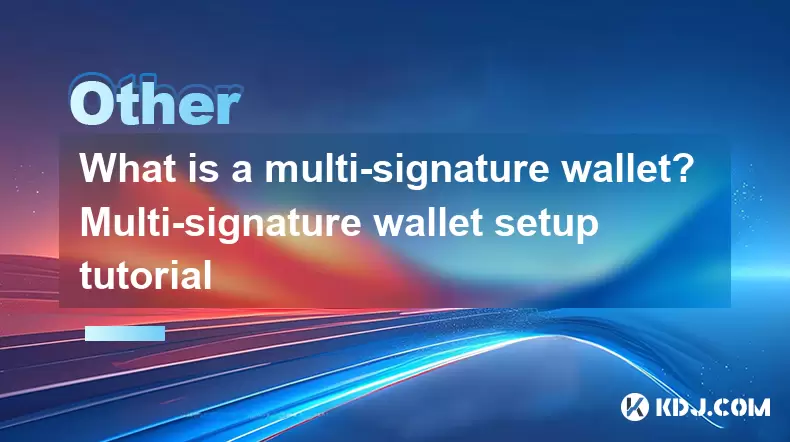-
 Bitcoin
Bitcoin $115200
-2.59% -
 Ethereum
Ethereum $3610
-4.80% -
 XRP
XRP $3.046
-1.70% -
 Tether USDt
Tether USDt $0.9997
-0.01% -
 BNB
BNB $762.6
-4.64% -
 Solana
Solana $168.7
-4.80% -
 USDC
USDC $0.9998
0.00% -
 Dogecoin
Dogecoin $0.2091
-4.05% -
 TRON
TRON $0.3270
-0.48% -
 Cardano
Cardano $0.7335
-3.72% -
 Hyperliquid
Hyperliquid $39.29
-10.55% -
 Stellar
Stellar $0.3999
-2.50% -
 Sui
Sui $3.542
-5.88% -
 Chainlink
Chainlink $16.62
-5.12% -
 Bitcoin Cash
Bitcoin Cash $551.5
-3.74% -
 Hedera
Hedera $0.2544
-3.06% -
 Avalanche
Avalanche $22.11
-4.29% -
 Ethena USDe
Ethena USDe $1.001
0.00% -
 Toncoin
Toncoin $3.523
-1.18% -
 UNUS SED LEO
UNUS SED LEO $8.939
-0.13% -
 Litecoin
Litecoin $106.3
-2.77% -
 Shiba Inu
Shiba Inu $0.00001235
-3.83% -
 Polkadot
Polkadot $3.647
-3.93% -
 Uniswap
Uniswap $9.071
-6.41% -
 Monero
Monero $301.6
-0.77% -
 Dai
Dai $0.0000
-0.01% -
 Bitget Token
Bitget Token $4.331
-3.46% -
 Pepe
Pepe $0.00001064
-5.31% -
 Cronos
Cronos $0.1367
-5.05% -
 Aave
Aave $259.2
-3.66%
What is a multi-signature wallet? Multi-signature wallet setup tutorial
Multi-signature wallets enhance security by requiring multiple private keys to authorize transactions, preventing unauthorized access and reducing risks from lost keys.
Jun 14, 2025 at 04:35 am

Understanding Multi-Signature Wallets
A multi-signature wallet (often abbreviated as multisig) is a type of cryptocurrency wallet that requires multiple private keys to authorize a transaction. Unlike standard wallets, which use a single key for access, multisig wallets enhance security by distributing control among several parties. This setup ensures that no single individual can unilaterally move funds without the consent of others.
In a typical 2-of-3 multisig configuration, for example, three keys are generated, and at least two are needed to complete any transaction. Such configurations are widely used in organizations, joint accounts, or high-value storage scenarios where decentralized control is essential.
Key Concept: The structure of a multisig wallet prevents unauthorized access and mitigates risks associated with losing a single private key.
Why Use a Multi-Signature Wallet?
The primary reason users opt for a multi-signature wallet is enhanced security. Since transactions require more than one signature, it becomes significantly harder for hackers or malicious actors to steal funds. Even if one private key is compromised, the attacker cannot execute a transaction without additional signatures.
Additionally, multisig wallets offer redundancy. If one user loses their key, the other signatories can still access the wallet and recover the funds. This makes them ideal for businesses, partnerships, or individuals who manage large amounts of digital assets.
Important Note: Multisig does not encrypt data but adds a layer of authorization complexity that protects against theft and human error.
Types of Multi-Signature Configurations
There are various configurations for multi-signature wallets, each tailored to different use cases:
- M-of-N Setup: Requires M signatures out of N total keys to approve a transaction. For instance, a 2-of-3 setup needs two approvals from three available keys.
- 1-of-N Setup: Allows any one of the N keys to sign a transaction. While less secure, this offers convenience and backup options.
- N-of-N Setup: Requires all N keys to approve every transaction. This maximizes security but reduces flexibility.
Each configuration serves specific purposes, from personal backups to corporate fund management.
Crucial Detail: Choosing the right configuration depends on your trust level among participants and the operational workflow you intend to implement.
Setting Up a Multi-Signature Wallet Using Electrum
To create a multisig wallet using Electrum, follow these steps carefully:
- Download and install the latest version of Electrum from its official website.
- Open the application and select "Create a new wallet."
- Choose "Multi-signature wallet" when prompted.
- Select the number of cosigners and the required signatures (e.g., 2 of 3).
- Generate a seed phrase for the first participant and securely store it.
- Share the public keys or extended public keys (xpubs) with the other participants.
- Import the xpubs from the other participants into your wallet.
- Verify the combined multisig address to ensure it matches across all devices.
Each step must be executed accurately to avoid misconfigurations or loss of access.
Critical Step: Ensure all co-signers verify the shared xpubs before finalizing the wallet creation process.
Managing Transactions with a Multi-Signature Wallet
Once the multisig wallet is set up, initiating a transaction involves coordination between signatories:
- One party creates an unsigned transaction file (.txn) using their wallet software.
- This file is shared with the required number of co-signers via secure channels.
- Each co-signer opens the .txn file in their wallet and signs it using their private key.
- The signed transaction files are collected and combined into a single signed transaction.
- Finally, the completed transaction is broadcasted to the blockchain network.
This process ensures that no single entity can initiate a transfer without consensus.
Important Reminder: Always double-check transaction details before signing, especially recipient addresses and amounts.
Frequently Asked Questions
Can I recover my multisig wallet if I lose one key?
Yes, provided you have enough remaining keys to meet the threshold requirement (e.g., 2 of 3). However, it's crucial to back up all keys properly from the start.
Are multisig wallets supported by all cryptocurrencies?
No, multisig support varies by blockchain protocol. Bitcoin and Ethereum-based tokens widely support multisig, but some altcoins may not.
Do hardware wallets support multisig setups?
Yes, many hardware wallets like Trezor and Ledger support multisig through compatible software like Electrum or Sparrow Wallet.
Is there a risk of coordination failure in multisig wallets?
Yes, if co-signers are unavailable or refuse to sign, transactions may be delayed or blocked. Always establish clear communication protocols beforehand.
Disclaimer:info@kdj.com
The information provided is not trading advice. kdj.com does not assume any responsibility for any investments made based on the information provided in this article. Cryptocurrencies are highly volatile and it is highly recommended that you invest with caution after thorough research!
If you believe that the content used on this website infringes your copyright, please contact us immediately (info@kdj.com) and we will delete it promptly.
- SPX6900, BlockDAG, and Miner Sales: A New York Minute on Crypto Trends
- 2025-08-01 23:30:15
- BlackRock, XRP ETF, and Ripple: Is the Perfect Storm Brewing?
- 2025-08-01 22:50:11
- Dogecoin's Bullish Engulfing Pattern: Is a Major Price Move Imminent?
- 2025-08-01 22:30:12
- Score Big with bet365 Bonus Code BOOKIES: Your Ticket to NFL, MLB, and WNBA Action!
- 2025-08-01 22:30:12
- SportsMillions Promo Code & Bonus: Your Ticket to Social Sports Action
- 2025-08-01 22:50:11
- BetMGM Bonus Code BOOKIES: Your Ticket to NFL, MLB & WNBA Action (and More!)
- 2025-08-01 22:55:54
Related knowledge

What is the difference between a blockchain and a database?
Aug 01,2025 at 09:36pm
Understanding the Core Structure of a BlockchainA blockchain is a decentralized digital ledger that records data in a series of immutable blocks linke...

How to start a business using blockchain?
Jul 28,2025 at 12:36am
Understanding the Basics of Blockchain TechnologyBefore diving into the process of starting a business using blockchain, it's crucial to understand wh...

What is a token on the blockchain?
Jul 21,2025 at 07:00am
Understanding the Concept of a TokenIn the realm of blockchain technology, a token is a digital representation of an asset or utility that exists on a...

Can blockchain be used for identity verification?
Jul 18,2025 at 02:14pm
Understanding Identity Verification in the Digital AgeIn the modern digital landscape, identity verification has become a critical component for ensur...

What is a consensus mechanism in blockchain?
Jul 21,2025 at 03:01am
Understanding the Basics of Consensus MechanismsA consensus mechanism is a critical component of any blockchain network. It refers to the process by w...

How to explain blockchain to someone with no tech background?
Jul 18,2025 at 11:08pm
Understanding the Basics of BlockchainTo explain blockchain to someone with no tech background, it's essential to start with simple analogies and avoi...

What is the difference between a blockchain and a database?
Aug 01,2025 at 09:36pm
Understanding the Core Structure of a BlockchainA blockchain is a decentralized digital ledger that records data in a series of immutable blocks linke...

How to start a business using blockchain?
Jul 28,2025 at 12:36am
Understanding the Basics of Blockchain TechnologyBefore diving into the process of starting a business using blockchain, it's crucial to understand wh...

What is a token on the blockchain?
Jul 21,2025 at 07:00am
Understanding the Concept of a TokenIn the realm of blockchain technology, a token is a digital representation of an asset or utility that exists on a...

Can blockchain be used for identity verification?
Jul 18,2025 at 02:14pm
Understanding Identity Verification in the Digital AgeIn the modern digital landscape, identity verification has become a critical component for ensur...

What is a consensus mechanism in blockchain?
Jul 21,2025 at 03:01am
Understanding the Basics of Consensus MechanismsA consensus mechanism is a critical component of any blockchain network. It refers to the process by w...

How to explain blockchain to someone with no tech background?
Jul 18,2025 at 11:08pm
Understanding the Basics of BlockchainTo explain blockchain to someone with no tech background, it's essential to start with simple analogies and avoi...
See all articles

























































































